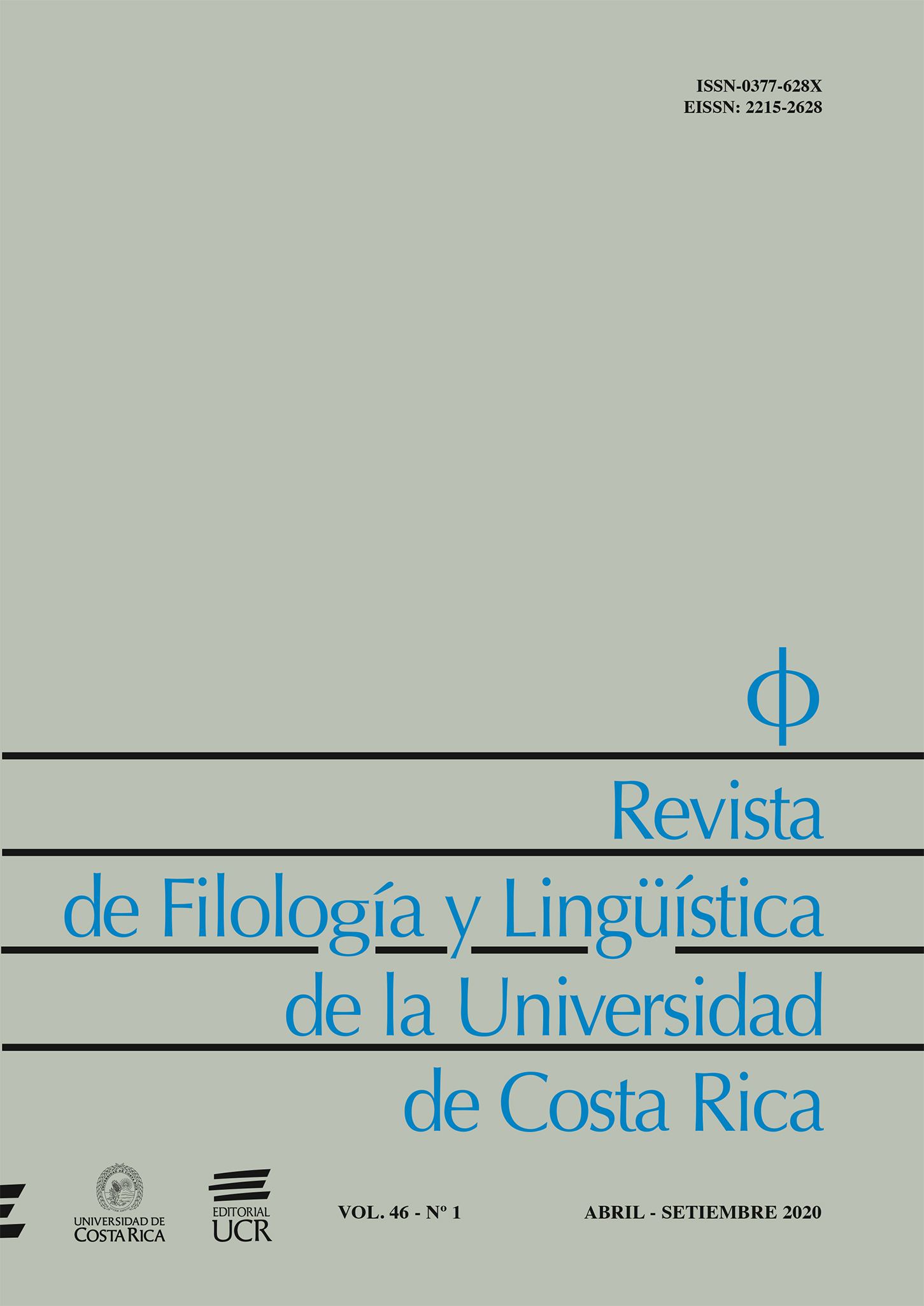Abstract
Over the years, literary speech, predominantly masculine, has created a spectrum made of literary images around the woman. One of the representations which is part of her imaginery is the literary landscape. For this research, we have compared the literary woman with this concept, the literary landscape, according to a territorial perspective of woman’s character and, therefore, to the real one. In order to show this relation, we have used the concept of simulacra (Baudrillard, 1978) and its real repercussions. Then, we have developed the link between the literary representation of the island in its own landscape and the literary interpretation of woman, by using the term land-as-woman (Kolodny, 1973). As an example, we have analyzed the testimonies which build the novel Mararía (1975), by Rafael Arozarena. Finally, we have concluded that feminizing the environment reinforces the gender roles which take part of the eternal feminine, so the real woman, as well as that conservative governments, such as the Spanish dictatorship after the civil war, the woman’s body, due to its procreative potencial, belongs to the system as the soil belongs to the country.
References
Azul. (1942). No hay nada más bello que servir. Medina, 69, p. 2.
Aínsa, F. (2000). Islario contemporáneo. Espejo de paciencia: revista de literatura y arte, 5, 9-15.
Arozarena, R. (1983). Mararía. Santa Cruz de Tenerife: Interinsular Canaria.
Arozarena, R. (1985). Motivaciones literarias de Lanzarote. Conferencia del autor en la Escuela de Magisterio de Las Palmas. Las Palmas de Gran Canaria.
Arozarena, R. (1987). Motivaciones literarias de Lanzarote. Guiniguada, 3, 7-16.
Augé, M. (2013). Naturaleza, cultura y paisaje. Revista Colombiana de Antropología, 49(2), 223-238.
Baudrillard, J. (1978). Cultura y simulacro. Pedro Rovira. Kairós: Barcelona.
Becerra Bolaños, A. (2010). Paisaje y memoria literaria. Anuario de Estudios Atlánticos, 56, 425-446.
Cirlot, J. E. (1994). Diccionario de símbolos. Barcelona: Labor.
Espinosa, A. (1988). Lancelot, 28º - 7º. Guía integral de una isla atlántica. Tenerife: Interinsular.
García de Mesa, R. (2004). Conversaciones con Rafael Arozarena. Tenerife: Benchomo.
González Duro, E. (2012). Las rapadas: El franquismo contra la mujer. Madrid: Siglo XXI de España.
Houellebecq, M. (2000). Lanzarote. Barcelona: Anagrama.
Jardiel Poncela, E. (1938). Mujeres verdes, mujeres rojas, mujeres lilas, mujeres grises y mujeres
azules. Y. Revista para la mujer nacionalsindicalista, 6 y 7, 36-37.
Kolodny, A. (1973). The land-as-woman: Literary convention and latent psychological content. En Women’s Studies (pp. 167-182). Great Britain: Gordon and Breach Science Publishers.
Marrero Henríquez, J. M. (2009). Introducción. En J. M. Marrero Henríquez (Ed.), Lecturas del paisaje (pp. 9-15). Las Palmas de Gran Canaria: Universidad de Las Palmas de Gran Canaria.
Martín Lucas, M. B. (2000). Mujer y nación: construcción de las identidades. En B. Suárez Briones y M. B. Martín Lucas (Eds.), Escribir en femenino (pp. 163-178). Barcelona: Icaria.
Pelka, A. (2014). Mujer e ideología en la posguerra española: Feminidad, cuerpo y vestido. Historia Social, 79, 23-42.
Pérez Hernández, N. y Becerra Bolaños, A. (2011). Creación vanguardista de espacios dislocados: Canarias y Guinea, de Agustín Espinosa a Agustín Miranda. Iberomania, 73, 76-89.
Saramago, J. (1997) Cuadernos de Lanzarote. Madrid: Alfaguara.
Segarra, M. (2000). Feminismo y crítica postcolonial. En M. Segarra y A. Carabí (Eds.), Feminismo y crítica literaria (pp. 71-94). Barcelona: Icaria.
Sevillano Calero, F. (2007). Rojos. La representación del enemigo en la Guerra Civil. Madrid: Alianza.
Suárez Briones, B. (2000). La segunda ola feminista. Teorías y críticas literarias feministas. En B. Suárez Briones y M. B. Martín Lucas (Eds.), Escribir en femenino (pp. 25-38). Barcelona: Icaria.
Ysern, A. (1943). Alabanza y homenaje a nuestras mujeres de Acción Católica. Y. Revista para la mujer nacional sindicalista, 68, 40-41.

